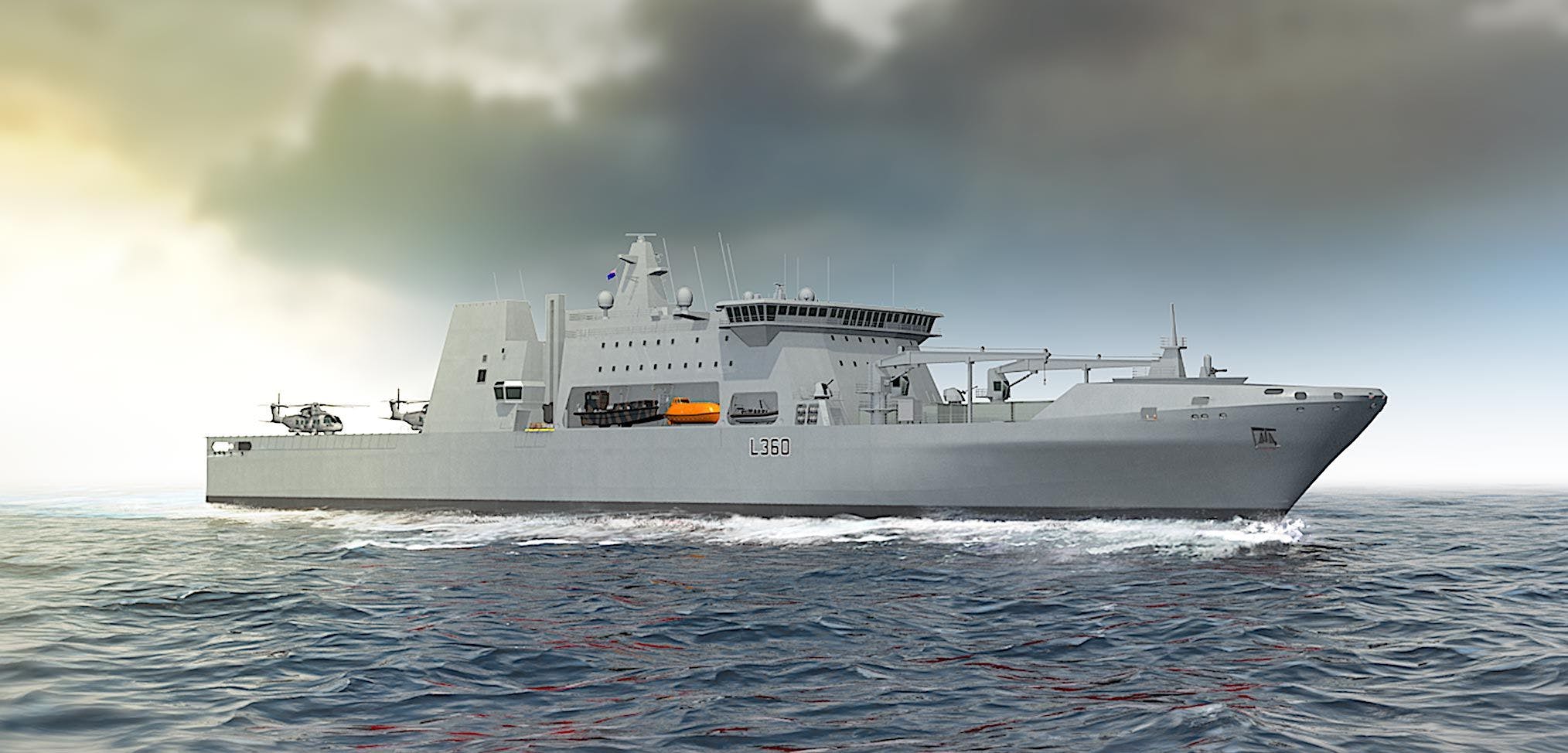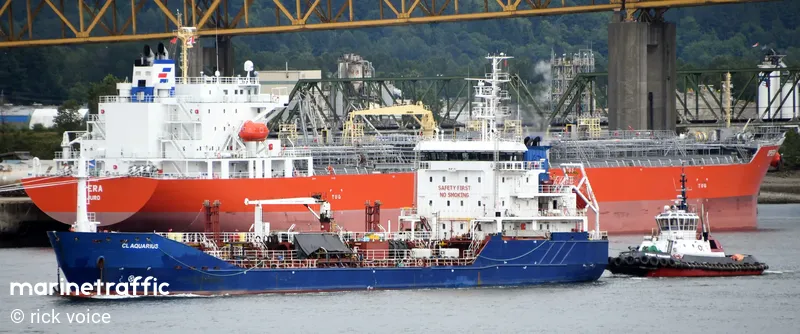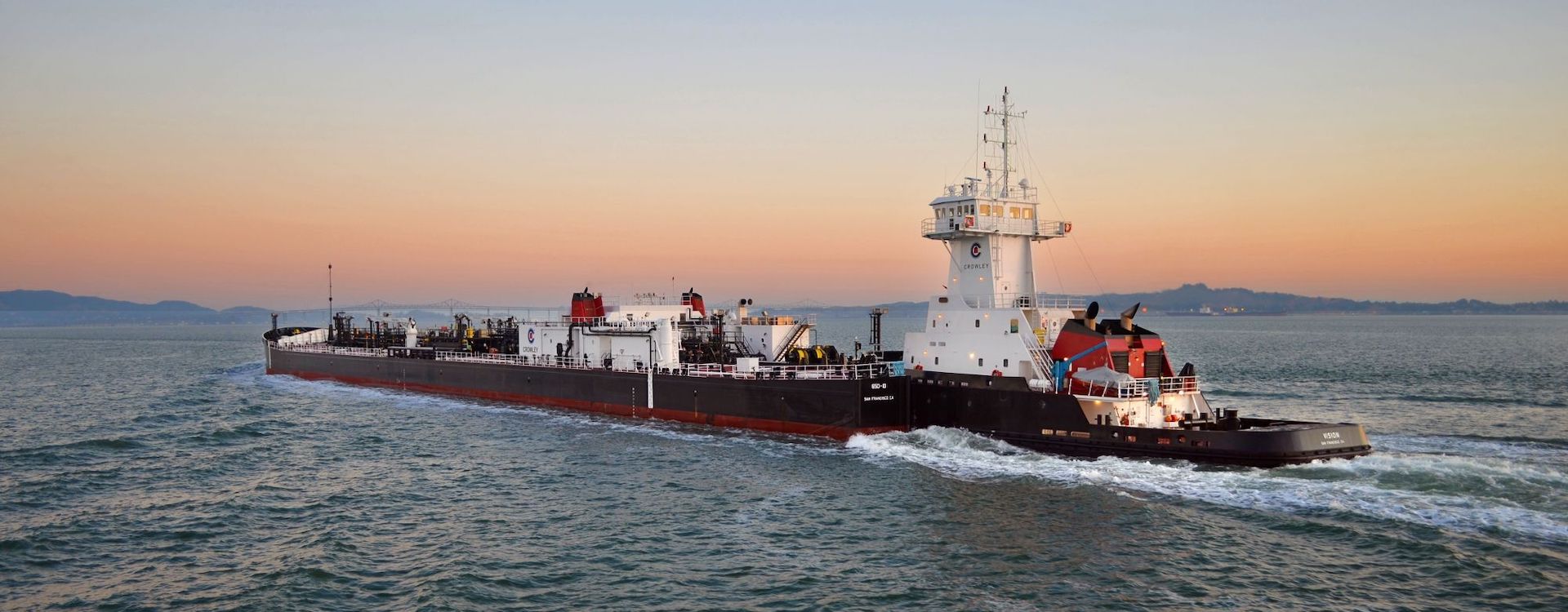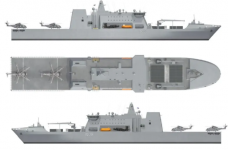I don't see Canada fighting alone. I was, however, suggesting that if or when push comes to shove we are not pulling our weight with respect to most of our allies. Some of the procurements currently in the works are promising but action should have occurred years ago. And recruitment levels should be much higher. Pipe dream? Perhaps. Unfortunately the general public seems to have little awareness of the dangers posed by China. If they did, then perhaps the government of the day would do more to strengthen the CAF.
You are using an out of date browser. It may not display this or other websites correctly.
You should upgrade or use an alternative browser.
You should upgrade or use an alternative browser.
New Canadian Shipbuilding Strategy
- Thread starter GAP
- Start date
MilEME09
Army.ca Veteran
- Reaction score
- 2,922
- Points
- 1,210
True but we also shouldn't be dependent on coalition elements for things like RAS for example or air defense on land....When has Canada ever gone into a unilateral war? We would just do whatever we could with what we had if something happened, but we'd be a nuisance at best if push came to shove if we tried going it alone. That would just be dumb.
Thinking we need to fight alone, as opposed to trying to figure out how we can contribute to a coalition force, is a waste of time IMHO.
- Reaction score
- 6,555
- Points
- 1,040
For sure but seems a bit over optimistic to want to field a full task group; having a RAS capability is good but there are only a few countries that can do that. We aren't anywhere near that tier, and we can't afford to maintain that kind of capability, and don't have the people to do it. No point buying a ship if we can't pay to keep it running or have the crew to actually fight it.True but we also shouldn't be dependent on coalition elements for things like RAS for example or air defense on land....
MilEME09
Army.ca Veteran
- Reaction score
- 2,922
- Points
- 1,210
That goes more to our empire building in DND than anything else. Our bureaucracy consumes everythingFor sure but seems a bit over optimistic to want to field a full task group; having a RAS capability is good but there are only a few countries that can do that. We aren't anywhere near that tier, and we can't afford to maintain that kind of capability, and don't have the people to do it. No point buying a ship if we can't pay to keep it running or have the crew to actually fight it.
- Reaction score
- 6,412
- Points
- 1,090
All the big brains at NDHQ agree with you (because obviously, they read your posts hereWhen has Canada ever gone into a unilateral war? We would just do whatever we could with what we had if something happened, but we'd be a nuisance at best if push came to shove if we tried going it alone. That would just be dumb.
Thinking we need to fight alone, as opposed to trying to figure out how we can contribute to a coalition force, is a waste of time IMHO.
However, the task group concept, which is what the entire NSS is built upon can work either way. You know as well as I do how our first OP Apollo TG was received by the US when we showed up with an AOR, AAW Destroyer, and two GP Frigates. A modernized version of that is as plug-and-play as it gets. When you show up with a worked-up TG that includes an AOR everyone is your friend.
It behoves us to be able to operate on our own, as that makes you a valuable ally. Which of course means you can operate on your own in Canadian interests when you have to. The RCN needs to be able to present that option to the gov't. Because when great power competition rears its head Lord Palmerston comes to mind:
"We have no eternal allies, and we have no perpetual enemies. Our interests are eternal and perpetual, and these interests it is our duty to follow."
- Reaction score
- 6,555
- Points
- 1,040
Not really; our FMFs don't have the capacity to maintain our existing fleet, we don't have enough sailors to do the 1st line maintenance coming out of the gate from a DWP, and we aren't paying for things to be fixed in DWPs because of budget constraints. Sure, bureaucracy slows down the response for getting things done, but we simple don't have the personnel/financial resources to fix what needs fixed, and maintain it properly (so it doesn't break down as much).That goes more to our empire building in DND than anything else. Our bureaucracy consumes everything
Even with ISSCs for the majority of the ships we can't keep up with the CPFs, so with all the fancy whizbangs on FELEX with almost no mid life major repairs to things like piping and other mechanical systems they are like a crappy old tempo someone bought for $500 with a big stereo, ground effects and a spoiler. Sounds okay just don't poke anything on the body or lift up the flooring. They wouldn't even leave the wall if they were to a class standard in a lot of cases, but we excel at pretending that there is no issue, and not even bothering to follow our own risk management process by simply ignoring the defects.
Colin Parkinson
Army.ca Myth
- Reaction score
- 12,638
- Points
- 1,160
Complement of 60, mostly RFA types, brings a lot to the table and would assist in maintaining the rest of the fleet when abroad.

 en.wikipedia.org
en.wikipedia.org

RFA Cardigan Bay - Wikipedia
- Reaction score
- 10,745
- Points
- 1,360
The Hyuga is too big for Canada as is the Mistral unfortunately. Ideally, we would possess something like the Karel Doorman or Rotterdam class that could be used by the Navy as a Command Platform and for Commando Operations. It would not be able to operate though or be acquired without a joint approach to how it would be employed and would require buy-in from the Army, Air Force and SOF.Something like the Hyuga class would work, especially if we use it more royal navy style IE use it as a way to deploy and support commando operations. JTF/CANSOF operating off a ship like that could do alot of damage since the Hyuga's have VLS, commandos go in, paint a target for the fleet to strike.
I would want two of them and for both of them to be stationed on the East Coast. I don't see any need in having them on the West Coast and think it would be a waste having one there. My conceptualization of how they could be used would for an OP HESTIA or OP HALO type operation. It would be useful as an HVU, humanitarian response, NEO or commando operations. Have a SOTF pack up kit permanently embarked on it with the ability to operate CH47s, CH148s and CH149s from the flight deck.
- Reaction score
- 8,585
- Points
- 1,160
Always been a fan of the Bay Class LPD or looking to the future the MRSS

Ellida – The future Multi Role Support Ship?
ELLIDA is a multi-role support and logistics vessel that can transport and deliver troops, vehicles, equipment and supplies.ukdefencejournal.org.uk

In focus: the BMT ELLIDA multi-role and logistics vessel concept | Navy Lookout
www.navylookout.com
Ellida looks an awful lot like Asterix and the ships proposed by Davie/Federal Marine Services


2x AOR-JSS and 3x AOR-MRSS as the core elements in a 5 TF navy?
Question in regards to what you mentioned about not having the proper budget to maintain the ships properly, or fix what needs to be fixed.Not really; our FMFs don't have the capacity to maintain our existing fleet, we don't have enough sailors to do the 1st line maintenance coming out of the gate from a DWP, and we aren't paying for things to be fixed in DWPs because of budget constraints. Sure, bureaucracy slows down the response for getting things done, but we simple don't have the personnel/financial resources to fix what needs fixed, and maintain it properly (so it doesn't break down as much).
Even with ISSCs for the majority of the ships we can't keep up with the CPFs, so with all the fancy whizbangs on FELEX with almost no mid life major repairs to things like piping and other mechanical systems they are like a crappy old tempo someone bought for $500 with a big stereo, ground effects and a spoiler. Sounds okay just don't poke anything on the body or lift up the flooring. They wouldn't even leave the wall if they were to a class standard in a lot of cases, but we excel at pretending that there is no issue, and not even bothering to follow our own risk management process by simply ignoring the defects.
Is this a matter of DND not receiving enough funding? Or somehow not able to use money to accomplish this? I ask because for a long time (I'm not sure if still the case) DND was returning around $1B to $2B annually to the government, that DND was unable to spend.
Was crew compliment a large consideration when deciding what ships will replace the CPF?
As much as I obviously support a well funded military, DND and TB need to simplify and smooth things out...how can we ask for more money, when we aren't able to spend the money we have? And basic things like maintaining a ship at a basic level isn't being done because of self-created obstacles?
And with the FELEX program, I know a lot of the PR stuff was on systems enhancement & 'mid life upgrades'. That honestly didn't include walking around the ship, inspecting some pipes or joints that are prone to maintenance, and at least patching some things up to 'spruce up the ship'? (I've realized here in my adult life that I don't know very much, about very much. So what seems simple to me, is inevitable more complicated once someone explains it who actually has experience with the subject matter. Maintaining piping on warships is probably a lot more complicated than just putting a ring-thing on it & it's done.)
I would think that lowering the crew requirement per ship would be one of the foundational factors into the decision being made, as that alone would ease a lot of stress off of the Navy?
- Reaction score
- 8,585
- Points
- 1,160
I'm surrounded by pedants.
I’m not sure if Kirkhill is supporting that those two vessels are similar or not. But to me they look very similar. Move the main bridge structure forward and remove a RAS station and you are left with a ship with a larger flight deck. Even the rake of the bow is similar.
Colin Parkinson
Army.ca Myth
- Reaction score
- 12,638
- Points
- 1,160
Our problem is that we hold onto ships far to long, we be better off selling them early and letting our allies who buy them deal with the wear and tear issues. If we rebuild the Fleet Maintenance and Hull tech trades and add new ships, we might be able to get ahead of the curve for a bit. Going by what Navyshooter says, I can see the AOP's being called on to do far more than envisioned till the CSC's come in to service and the wear and tear is minimised on the Halifax's.
- Reaction score
- 6,412
- Points
- 1,090
I'm surrounded by pedants.
Don't you use big words I can't understand...

Military ships (fighting) generally have superstructures in the middle. Working/civilian ships generally have superstructures aft or forward to allow for the working/storage space to be as big as possible.I’m not sure if Kirkhill is supporting that those two vessels are similar or not. But to me they look very similar. Move the main bridge structure forward and remove a RAS station and you are left with a ship with a larger flight deck. Even the rake of the bow is similar.
To my eye, it's very different.
- Reaction score
- 146
- Points
- 710
Slowly, slowly:
Shipbuilding strategy seemed like a great idea at the time. Two mononoply shipyards that had to be completely remade.
Mark
Ottawa
Pandemic throwing wrench in construction of new navy, coast guard ships: officials
COVID-19 has thrown yet another wrench in the long overdue construction of new ships for the navy and coast guard, say top military and procurement officials, adding the full scope of the damage won't be known until after the pandemic.
The federal government has invested billions of dollars over the past decade into replacing Canada's aging navy and coast guard fleets with dozens of new ships, including icebreakers, warships and support vessels.
Yet the effort has been plagued with numerous cost overruns and delays, which federal procurement department deputy minister Bill Matthews on Tuesday blamed on overly optimistic planning at the outset of the multibillion-dollar project.
"The initial schedules way back when were indeed not realistic," he told the House of Commons public accounts committee. "As time marched on and people realized that those initial schedules just weren't going to hold, there were adjustments made."
Those shortcomings were recently flagged in a damning report from Canada's auditor general, who warned in February that the problems could leave the navy and coast guard without ships as older vessels are retired before replacements arrive.
That report was produced before COVID-19, and Defence Department deputy minister Jody Thomas told the committee that work on all of the new vessels has since been further delayed to various degrees by the pandemic.
While Thomas suggested the government has since started to make up some of the lost ground, she added: "We cannot yet know the full impacts of COVID on shipbuilding timelines."
"This is another difficult reality of COVID. Until we are over the pandemic we will not have a complete and accurate picture of what the full impact has been, including anticipated delays on major procurement," she said.
Officials insisted the navy and coast guard are taking measures to ensure their existing ships can remain in the water until replacements arrive, including refits and upgrades to vessels that are in some cases already more than 50 years old.
The bureaucrats could not immediately say how much money was being invested in the different coast guard and navy fleets to keep them floating.
But Matthews acknowledged that doing so will in many cases result in "substantial" additional costs to the government, even as officials acknowledged that further delays to the construction of new vessels adds to their price tags.
"Across the board, the older the ships get, the (greater the) increase in maintenance costs," he said. "And it's quite substantial."
The officials also revealed that 10 years after they were tapped to build the new vessels, neither Seaspan Shipyards in Vancouver nor Halifax-based Irving Shipbuilding have yet improved their facilities to the point where they meet international standards [emphasis added].
That is despite the federal government having required achievement of such a "target state" as a condition for winning the work.
Public Services and Procurement Canada assistant deputy minister Simon Page said the government is working on "corrective action plans" to get the two shipyards to the required state.
Officials went on to suggest that failure is contributing to the delay in finalizing Quebec-based Chantier Davie's addition as the third yard in the shipbuilding strategy, as the government wants to make sure it can meet the requirement...

Pandemic throwing wrench in construction of new navy, coast guard ships: officials
OTTAWA — COVID-19 has thrown yet another wrench in the long overdue construction of new ships for the navy and coast guard, say top military and procurement officials, adding the full scope of the damage won't be known until after the pandemic. The federal government has invested billions of...ca.finance.yahoo.com
Shipbuilding strategy seemed like a great idea at the time. Two mononoply shipyards that had to be completely remade.
Mark
Ottawa
- Reaction score
- 8,585
- Points
- 1,160
I agree. From a watchkeeper's point of view, on the bridge, they look very dissimilar.Don't you use big words I can't understand...

Military ships (fighting) generally have superstructures in the middle. Working/civilian ships generally have superstructures aft or forward to allow for the working/storage space to be as big as possible.
To my eye, it's very different.
However, from a functional point of view I find a lot of commonality.
Veering.
As I look at these ships I see a few elements that make me think of a lost class of vessels: the coastal trader. Small to mid-size vessels capable of carrying mixed cargoes to austere ports and transferring wet and dry cargo ship to shore by lighter, gangway, crane and pump. Its a class that has disappeared in North American ports. Do they show up in other parts of the world?
Colin Parkinson
Army.ca Myth
- Reaction score
- 12,638
- Points
- 1,160
Coastal traders are still common in the world, but most of our small ports our gone so the smallest you see generally is a Handymax sized ship. In a slight reversal on this coast we now have this ship doing bunkering in Vancouver.

Most of the coastal traffic has been replaced by pusher tugs, to get around manning requirements

This was the last proper coastal freighter on this coast

Most of the coastal traffic has been replaced by pusher tugs, to get around manning requirements

This was the last proper coastal freighter on this coast
- Reaction score
- 8,585
- Points
- 1,160
Chicken and Egg time.
Did the ports disappear for want of transport? Or did the transport disappear for want of ports? Either way we lost a lot of trained sailors and a lot of economic activity. Part of the same set of problems the Labrador and the Arctic (to include Northern Ontario and Quebec) experience.
There is a place for government intervention. Just as there is in railroads, highways, airports and utilities.
Did the ports disappear for want of transport? Or did the transport disappear for want of ports? Either way we lost a lot of trained sailors and a lot of economic activity. Part of the same set of problems the Labrador and the Arctic (to include Northern Ontario and Quebec) experience.
There is a place for government intervention. Just as there is in railroads, highways, airports and utilities.
Pelorus
Full Member
- Reaction score
- 444
- Points
- 780
Most of the coastal traffic has been replaced by pusher tugs, to get around manning requirements
Can you elaborate? This is a sector I don't know too much about.
I always just assumed that the popularity of pushing tugs in the internal waters of BC was more that the environmentals could support it, and it allowed flexibility to quickly (relatively speaking) change loads and get underway again while the port staff worked on unloading the original barge.
Last edited:
Similar threads
- Replies
- 2
- Views
- 8K
- Replies
- 0
- Views
- 9K
- Replies
- 558
- Views
- 226K
- Article
- Replies
- 121
- Views
- 144K




